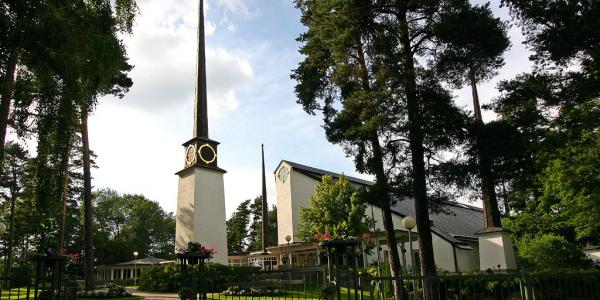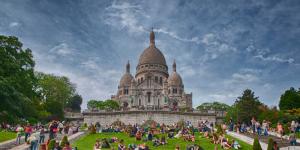Stockholm Sweden Temple - The Church of Jesus Christ of Latter-day Saints
The Stockholm Sweden Temple (Swedish: Templet i Stockholm) is the 34th operating temple of The Church of Jesus Christ of Latter-day Saints (LDS Church).
Stockholm Sweden Temple
Number
34
edit data
Dedicated
2 July 1985 by
Gordon B. Hinckley
Site
4.47 acres (1.8 hectares)
Floor area
14,508 sq ft (1,348 m2)
Height
112 ft (34 m)
Preceded by
Freiberg Germany Temple
Followed by
Chicago Illinois Temple
Official website • News & images
Additional information
Announced
1 April 1981
Groundbreaking
17 March 1984 by
Thomas S. Monson
Open House
10–22 June 1985
Designed by
John Sjostrom and Church A&E Services
Location
Tempelvägen 5
Västerhaninge
Sweden
Exterior finish
Masonry exterior with copper roof
Temple design
Modern adaptation of six-spire design
Ordinance rooms
4 (Movie, stationary sessions)
Sealing rooms
3
Clothing rental
Yes
Cafeteria
Limited
Visitors' center
No
The temple in 2004
The April 1981 announcement of the Stockholm Sweden Temple was received with virtually no opposition. There were numerous sites explored for the building of the temple, but the one decided upon by church leaders was in Västerhaninge in Haninge Municipality, just south of Stockholm. Municipal officials and merchants welcomed the temple project, and later the Municipality showed further support by changing the name of the street on which the temple is located to Tempelvägen ("The Temple Road"). The Stockholm Sweden Temple was dedicated by Gordon B. Hinckleyon July 2, 1985.[1]
The temple sits on a 6-acre (24,000 m2) lot with six spires rising above the pines in the nearby forest. A cobblestone path leads to its doors. The Stockholm Sweden Temple has a total of 14,508 square feet (1,347.8 m2), four ordinance rooms, and three sealing rooms. The temple serves Latter-day Saints from the countries of Sweden, Norway, and Latvia.
The area surrounding the temple is known for its Iron Age burial grounds, including Jordbro Grave Field. The temple itself was built on a part of the ancient Åby Grave Field (Åbygravfältet).[2]











